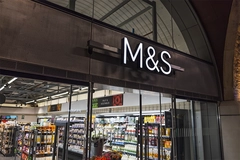
- Industry news
Industry news
- Category news
Category news
- Reports
- Key trends
- Multimedia
- Journal
- Events
- Suppliers
- Home
- Industry news
Industry news
- Category news
Category news
- Reports
- Key trends
- Multimedia
- Events
- Suppliers
Novozymes and Chr. Hansen Develop Enzyme for Cheese Dry Matter Saving

The benefit for the dairies lies within the difference between the pizza cheese price and the lactose market price: LBA in pizza cheese has the opportunity to generate significantly more value for the cheese maker than selling the pure lactose can.

27/02/09 A new enzyme solution from Chr. Hansen and Novozymes allows cheese manufacturers to add value to the whey stream and save cheese dry matter.
The Chr. Hansen/Novozymes strategic alliance which was formed in 2002 debuts a new solution marketed under the name LactoYIELD. LactoYIELD converts lactose into lactobionic acid, LBA, in an enzymatic process. An advanced enzyme innovation with unique opportunities both inside and outside the food area.
“Jointly, Chr. Hansen and Novozymes have developed a process that enables industrial application of lactose oxidase, a member of the cellobiose oxidase enzyme class,” explains Per Munk Nielsen, Senior Science Manager, Novozymes. “The proprietary enzyme and enzymatic process enable 100% conversion of lactose — of which the biggest cheese producers out there have a lot — into LBA. Until LBA has been produced by costly non-enzymatic chemical reactions and primarily in the pharmaceutical and cosmetics areas.”
Treading new ground, the enzyme alliance has proof of concept within cheese production. “This new, proprietary process allows cost-effective manufacturing of large amounts of LBA from the whey stream in a cheese processing plant,” explains Hans Christian Bejder, Marketing Director, Chr. Hansen. “LBA can be added as a dry matter into pizza cheese without influencing the properties of the cheese.”
“In other words,” Bejder continues, “the value of lactose becomes the same as the value of cheese dry matter. The return on this application is very high and can easily justify investments required even at relatively low pizza cheese volumes.”
The benefit for the dairies lies within the difference between the pizza cheese price and the lactose market price: LBA in pizza cheese has the opportunity to generate significantly more value for the cheese maker than selling the pure lactose can.
“Currently,” says Bejder, “the value of lactose powder is approx. 15 times lower than the value of pizza cheese dry matter. The pizza cheese manufacturers get more cheese out of the same amount of milk while at the same time increasing the value of their whey. Playing with the idea that this concept is applied to the 2.5 million ton pizza cheese produced world-wide then 100.000 tons of extra cheese can be made with the same amount of milk used today.”
There are many other potential applications of enzymatic LBA in and outside food, including:
• Cheese, besides from pizza cheese: Low cost dairy-based dry matter in other cheese types;
• Ice-cream: Potential improvement of melt ability and replacement of SMP;
• Milk and other beverages: Salts of LBA such as Ca-LBA and K-LBA are highly soluble in aqueous solutions and therefore interesting candidates for mineral fortification of milk, soft drinks and juices;
• Meat industry: Reduce water loss in meat products during freeze/thaw and cooking processes;
• Pharmaceutical use: LBA has unique function on cell surfaces and has shown potential use in wound healing products
The alliance is now looking for selected partners to further explore and develop proof of concept in new and promising applications for LBA other than pizza cheese. Simultaneously regulatory approvals in markets where LBA is not yet approved as a food ingredient will be addressed.
In 2002 the two world leaders in enzyme innovation — Chr. Hansen and Novozymes — formed a strategic alliance, the ‘Milky Way Alliance’. The purpose was to bring valuable enzyme solutions to the dairy industry. By teaming up with the industry, the alliance develops advanced enzyme solutions based on the complementary technologies of two innovation leaders. In 2005 the alliance launched YieldMAX, an advanced enzyme solution which offers increased yield for manufacturers of pasta filata types of cheeses.










